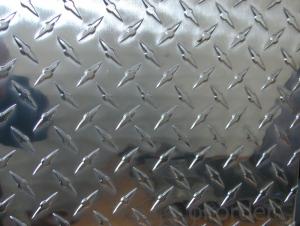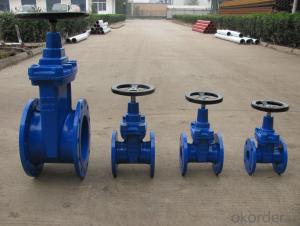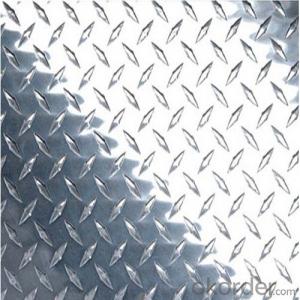1/8 Inch Aluminum Diamond Plate
1/8 Inch Aluminum Diamond Plate Related Searches
Led Light Bulbs For Ceiling Fixtures Led Lamps For Ceiling 42 In Ceiling Fan With Light Aluminum Coil Stock For Gutters Aluminum Foil For The Grill Hole Saw For Aluminum Plate Aluminum Tread Plate For Trailer Bow Plate For Aluminum Boat Aluminum Foil For Grow Room Aluminum Foil For Joint PainHot Searches
Stock Price For Aluminum Aluminum Coil Stock For Sale Aluminum Gutter Coil For Sale Used Aluminum Scaffolding For Sale 1/4 Aluminum Plate For Sale Aluminum Bar Stock For Sale Aluminum Round Stock For Sale Aluminum Diamond Plate For Sale Aluminum Scaffolding For Sale Craigslist 6061 Aluminum Plate For Sale Aluminum Dock Plate For Sale 7075 Aluminum Plate For Sale Aluminum Tread Plate For Sale Aluminum Checker Plate For Sale Aluminum Plate For Sale Near Me Plate Aluminum For Sale Aluminum Plate For Sale Aluminum Square Stock For Sale Aluminum Flat Stock For Sale Billet Aluminum Stock For Sale1/8 Inch Aluminum Diamond Plate Supplier & Manufacturer from China
Okorder.com is a professional 1/8 Inch Aluminum Diamond Plate supplier & manufacturer, offers integrated one-stop services including real-time quoting and online cargo tracking. We are funded by CNBM Group, a Fortune 500 enterprise and the largest 1/8 Inch Aluminum Diamond Plate firm in China.Hot Products
FAQ
- Yes, aluminum sheet can be used for reflective surfaces. Aluminum is known for its high reflectivity, making it a popular choice for various applications that require reflective surfaces. Aluminum sheets can be polished to a high shine, allowing them to reflect light and create a mirrored effect. This makes them ideal for uses such as reflectors in lighting fixtures, solar panels, mirrors, and decorative purposes. Additionally, aluminum's reflective properties make it suitable for applications where heat reflection is required, such as in thermal insulation or roofing materials. Overall, aluminum sheets are a versatile and effective option for creating reflective surfaces.
- High-temperature applications are not suitable for 101 aluminum sheets. Although 101 aluminum is a pure aluminum alloy known for its impressive corrosion resistance and formability, it possesses a relatively low melting point of 660 degrees Celsius (1220 degrees Fahrenheit). For high-temperature purposes, it is preferable to use materials like stainless steel or high-temperature alloys, which exhibit higher melting points and superior heat resistance. Utilizing 101 aluminum sheets in high-temperature environments may lead to material deformation, melting, or failure, thereby jeopardizing the integrity and safety of the application.
- Seamless tubes or pipes can indeed be created from aluminum sheets. This is commonly achieved by employing a technique known as extrusion, in which the aluminum sheet is heated and compelled through a die to acquire the desired form. The extrusion process enables the production of seamless tubes or pipes that possess uniform dimensions and a polished surface. Due to its exceptional versatility and malleability, aluminum is an ideal material for numerous applications necessitating lightweight and corrosion-resistant tubing.
- The density of aluminum sheets is subject to variation based on the particular alloy and thickness of the sheet. On average, aluminum sheets have a density ranging from 2.6 to 2.8 grams per cubic centimeter (g/cm³). It is worth mentioning that this figure may undergo slight modifications as a result of the precise manufacturing process and any additional coatings or treatments administered to the sheets.
- a dream I had where the carbon element was extracted from aluminum and ploished it became transparent, it was bendable and you could puncher it with out breaking it ?
- Aluminium is an element! Elements are pure substances, therefore aluminium doesn't contain any carbon. What do you mean?
- Chemical storage containers are usually not appropriate for aluminum sheets. Despite aluminum's reputation for being resistant to corrosion, it can still interact with certain chemicals, causing the container to deteriorate and potentially contaminate the substance being stored. In addition, aluminum is a relatively fragile metal and may not offer sufficient strength and durability for the long-term storage of hazardous chemicals. It is recommended to utilize materials that are explicitly designed for chemical storage, such as high-density polyethylene (HDPE), polypropylene (PP), or stainless steel, as they provide exceptional resistance to chemicals and structural stability.
- Aluminum sheets are an excellent choice for interior design purposes. This material is both versatile and durable, allowing for various creative uses in enhancing the aesthetics of indoor spaces. Its malleability enables easy shaping, cutting, and manipulation, resulting in unique and contemporary designs. Different finishes, such as brushed, polished, or textured, further expand the design options. One major advantage of utilizing aluminum sheets in interior design is their lightweight composition. This feature simplifies handling and installation, reducing labor and transportation expenses. Additionally, aluminum's corrosion resistance makes it perfect for environments with high humidity or moisture, such as bathrooms or kitchens. Aluminum sheets find application in various aspects of interior design, including wall cladding, ceiling panels, room dividers, furniture, and decorative elements. The ability to paint or coat them in different colors allows seamless integration into any design scheme. Furthermore, perforation or engraving can create patterns or intricate designs, adding a distinct visual appeal to the space. Moreover, aluminum is a sustainable material with high recyclability. The recycling process consumes significantly less energy compared to the production of new aluminum, making it an environmentally friendly option for interior design applications. To summarize, the versatility, durability, lightweight nature, corrosion resistance, and manipulability of aluminum sheets make them highly suitable for interior design. They offer numerous design possibilities and can be used in various applications, rendering them a popular choice among designers and architects.
- After installation, it is indeed possible to paint aluminum sheets. Aluminum, being a highly versatile and durable material, can be painted for the purpose of improving its appearance or harmonizing it with the surrounding environment. However, it is crucial to adequately prepare the surface before painting in order to ensure that the paint adheres well and lasts long. This typically involves cleaning the surface, eliminating any dirt or debris, and applying a suitable primer to enhance paint adhesion. Once the surface is prepared, various types of paint can be used on the aluminum sheet, such as acrylic, oil-based, or epoxy paint. To achieve the best results, it is advisable to seek guidance from a professional painter or carefully follow the instructions provided by the paint manufacturer.














































